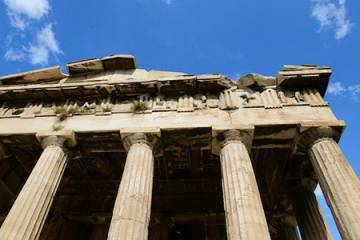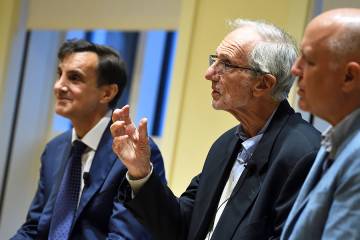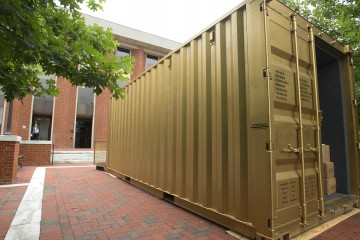If libraries didn't yet exist, the concept wouldn't stand a chance of getting off the ground in today's America, suggests sociologist Eric Klinenberg.
Imagine a group presenting that idea to a modern Congress: Vast offerings of books, knowledge, and programming, free to all without restriction simply "because you're a human being," Klinenberg said.
"They would get the world's biggest straitjacket and wrap us all up in it," Klinenberg said during a talk at Johns Hopkins University on Wednesday evening sponsored by the university's Stavros Niarchos Foundation Agora Institute.
The scholar and author said he became "hooked" on libraries through frequent visits to a branch in the Lower East Side of Manhattan that was originally designed by Andrew Carnegie, who envisioned libraries as a "reprieve from the factories and tenements and crowded conditions of [one's] neighborhood," Klinenberg said.
Klinenberg, a sociology professor at New York University and director of its Institute for Public Knowledge, explored this vision in his latest book, Palaces for the People, which takes its title from a phrase made famous by Carnegie.
His book examines more broadly how our "social infrastructure" of shared spaces—not only libraries, but also parks, playgrounds, gardens, child care centers, churches, and synagogues—help us form some of our most significant and abiding connections. These spaces are crucial, Klinenberg argues, for bridging divides and safeguarding the values of democracy.
In some cases, social infrastructure can also be lifesaving, Klinenberg said, sharing research from Chicago that was conducted following a devastating heat wave in 1995 that killed hundreds of city residents. While analyzing patterns of that crisis, Klinenberg identified the most vulnerable communities: segregated, low-income neighborhoods with high proportions of African-Americans. He was surprised to find two adjacent neighborhoods with almost identical demographics on paper, but vastly different outcomes from the heat wave.
The key difference—as Klinenberg explored in his 2002 book Heat Wave: A Social Autopsy of Disaster in Chicago—boiled down to social infrastructure. The more resilient neighborhood had more shared public spaces, fostering a stronger community support system. In contrast, the Englewood neighborhood, where the death toll was 10 times higher, was marked by empty lots, broken sidewalks, and an absence of commercial vitality.
"If you live in a neighborhood like this ... you don't go into the public realm as much," Klinenberg said. "If there's a crisis, people don't know whose door to knock on."
Later, Klinenberg, who specializes in climate change research, was called upon for another crisis: Hurricane Sandy. The Obama administration recruited him as research director of the Rebuild by Design competition, which sought innovative projects to increase urban resilience to climate disasters.
One winning project from that competition was "The Big U", a plan for Manhattan's Lower East Side that combines 10 miles of flood-protecting topography with community amenities like "athletic fields, walking paths, and bike paths," Klinenberg said.
Asked by an audience member how developments like these can avoid the inevitable pitfalls of gentrification, Klinenberg acknowledged that there's no easy solution.
"What I'm not saying ... is that the solution to all of our problems is building beautiful libraries and parks, and everything will be better," he said. "I'm saying it's our best first step."
Klinenberg's talk Wednesday in Mason Hall was among the first events hosted by the SNF Agora Institute at Johns Hopkins, which aims to strengthen the ideals of democracy through civic discourse. The institute, launched in 2017 with a $150 million gift from the Stavros Niarchos Foundation, has plans for a new 38,000-square-foot interdisciplinary center on the Homewood campus, designed by world-renowned architect Renzo Piano.
Posted in Arts+Culture, Politics+Society
Tagged urban design, snf agora institute











